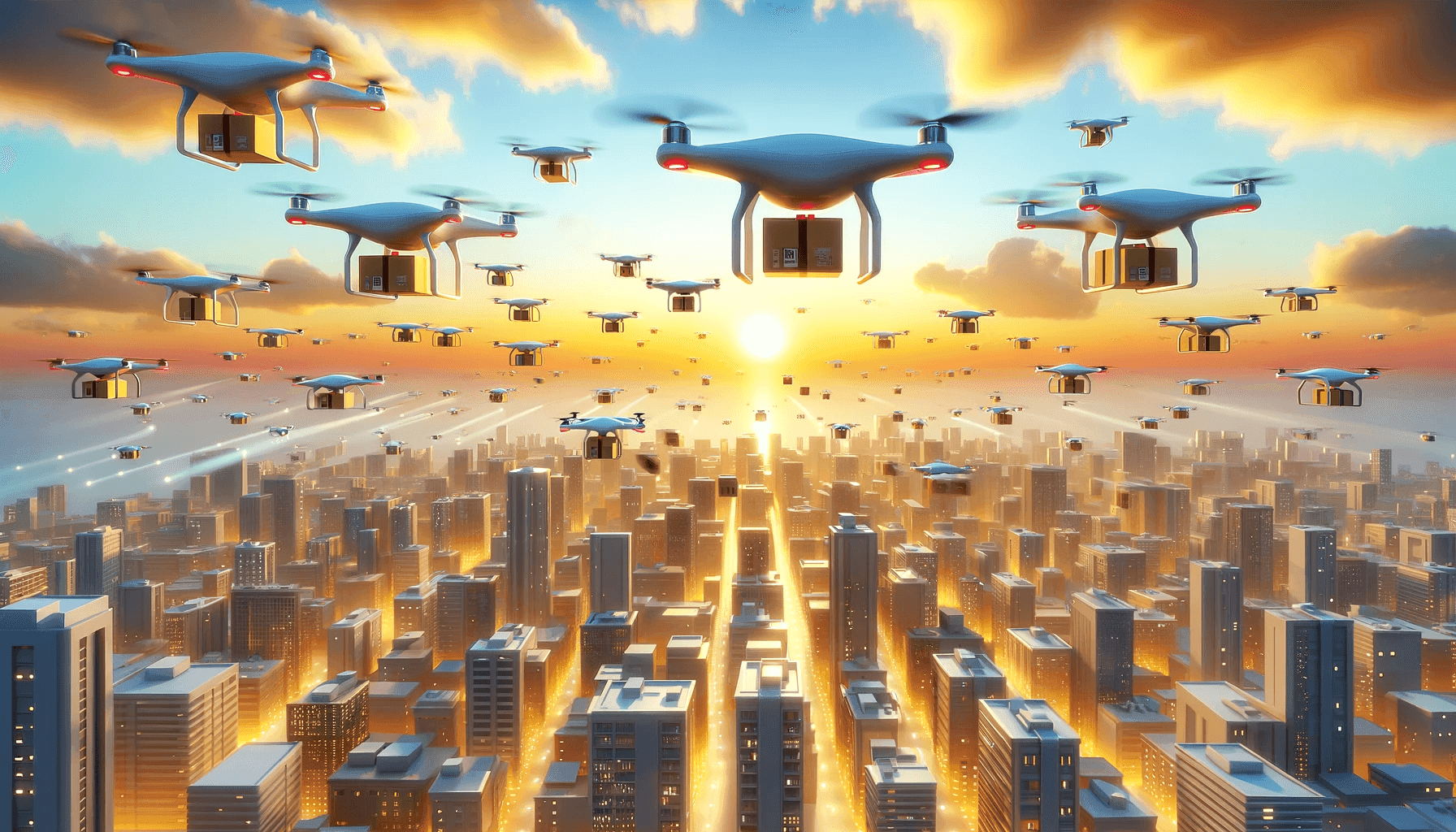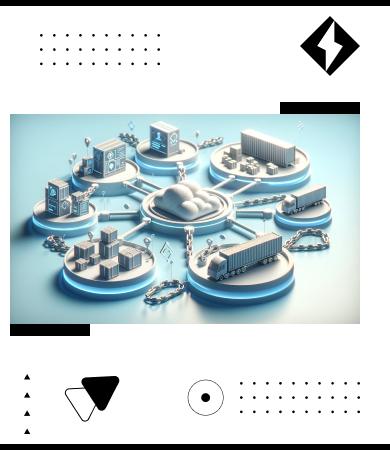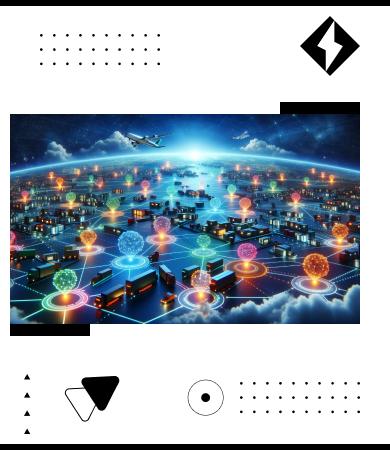Support center +91 97257 89197
Logistics SolutionApril 9, 2024
The Role of Drones in Enhancing Delivery Speed and Efficiency

In the rapidly evolving landscape of logistics and delivery services, the advent of drone technology has marked a significant leap forward. This blog post delves into the transformative role of drones in enhancing the speed and efficiency of delivery systems, providing a glimpse into the future of logistics.
Introduction
The evolution of delivery methods has been a constant pursuit of speed and efficiency. From traditional mail carriers to the latest e-commerce delivery vans, the logistics industry has continually adapted to new technologies to meet the growing demand for faster and more reliable services. Among these advancements, drone technology has emerged as a game-changer, offering unprecedented possibilities in logistics.
The Advent of Drone Delivery
The concept of drone delivery first captured public imagination as a futuristic idea but has rapidly evolved into a practical solution for many logistical challenges. Drones, also known as unmanned aerial vehicles (UAVs), have been utilized for various purposes, from surveillance and photography to agriculture and disaster management. Recently, their potential in the delivery sector has come to the forefront, with companies like Amazon, UPS, and other logistics pioneers exploring drone-based delivery systems.
Technical Aspects of Drone Delivery
Drone delivery systems employ a range of UAVs, each suited to different delivery needs. The most common types include:
- Fixed-Wing Drones: These drones are known for their efficiency over long distances, making them ideal for rural or remote deliveries.
- Multi-Rotor Drones: Typically used for shorter distances, these drones can hover and maneuver in tight spaces, perfect for urban environments.
- Hybrid Drones: Combining the best of both worlds, hybrid drones can take off and land vertically like multi-rotors but convert to fixed-wing flight for longer distances.
Benefits of Drone Delivery
The introduction of drones into the delivery sector brings numerous advantages:
- Speed: Drones can drastically reduce delivery times by taking the most direct route to their destination without the constraints of road networks or traffic congestion.
- Efficiency: Operating drones can be more energy-efficient and cost-effective than traditional delivery vehicles, especially for small packages or in densely populated areas.
- Accessibility: Drones have the unique capability to reach remote or hard-to-access locations, providing a vital service in areas where traditional delivery methods fall short.
Enhancements in Operational Efficiency
Drones also bring about substantial improvements in operational efficiency. By automating the delivery process, businesses can reduce their reliance on manual labor, thereby lowering associated costs and minimizing human error. Additionally, drones contribute to environmental sustainability by reducing the carbon footprint associated with conventional delivery vehicles.
However, the integration of drones into delivery systems is not without challenges. Regulatory hurdles, technical limitations, and operational issues such as weather dependency pose significant obstacles. Despite these challenges, the potential benefits of drone deliveries continue to drive innovation and regulatory discussions.
Challenges and Limitations
Despite the promising benefits, the widespread adoption of drone delivery systems encounters several hurdles. Regulatory restrictions are among the most significant challenges, as airspace management and safety concerns necessitate stringent rules governing drone operations. Navigating these regulations to obtain necessary approvals can be a complex process for businesses.
Technical limitations also pose challenges, particularly concerning battery life and payload capacity. Current drone models are limited by the distance they can travel and the weight they can carry, which could restrict their use for larger or longer-distance deliveries. Moreover, drones are susceptible to weather conditions, with strong winds, rain, and other adverse weather potentially impacting their reliability.
Emerging Technologies in Drone Delivery
The horizon of drone delivery is continuously expanding with the advent of cutting-edge technologies. Artificial Intelligence (AI) stands at the forefront, enhancing the autonomy of drones, enabling them to make real-time navigation decisions, and optimizing delivery routes for maximum efficiency. The integration of AI with drone technology not only streamlines operations but also significantly reduces the need for human intervention, paving the way for fully autonomous delivery fleets.
Another groundbreaking development is the concept of drone swarms. This innovative approach involves the coordinated operation of multiple drones, managed through sophisticated algorithms to perform complex tasks collectively. Drone swarms could revolutionize delivery services in densely populated urban areas, where a single delivery point might require multiple packages simultaneously.
Moreover, advancements in battery technology and alternative power sources are crucial for extending the flight range and payload capacity of delivery drones. Innovations such as solar-powered drones or advanced lithium-ion batteries could overcome current limitations, making drones even more viable for a wider range of delivery tasks.
Case Studies: Success Stories and Lessons Learned
Real-world implementations of drone delivery systems provide valuable insights into their potential and practicality. One notable example is Zipline's use of drones for medical supply deliveries in Rwanda. This operation has significantly improved the speed and reliability of critical medical deliveries in remote areas, showcasing drones' life-saving potential.
Another example is Amazon's Prime Air, which has been testing drone deliveries to bring goods to customers in less than 30 minutes. These initiatives highlight the feasibility of drone deliveries and offer lessons in overcoming technical and regulatory challenges.
Conclusion
The role of drones in enhancing delivery speed and efficiency is becoming increasingly apparent as technology advances and regulatory environments evolve. While challenges remain, the continuous innovations and successful real-world applications underscore drones' potential to revolutionize the logistics and delivery industry.
As businesses and regulatory bodies work together to address the challenges, the integration of drones into delivery systems is set to increase, promising a future where deliveries are faster, more efficient, and more environmentally friendly.
"Embrace the future of logistics by considering the integration of drone technology into your delivery services. Explore how drones can enhance your operational efficiency and customer satisfaction. Contact us for more information and guidance on adopting drone delivery solutions."
TLDR
Drones are transforming the delivery landscape by offering faster, more efficient, and environmentally friendly alternatives to traditional methods. This blog explores the rise of drone delivery, its benefits, challenges, and the future prospects in enhancing delivery speed and efficiency.
FAQs
Drones can travel directly to their destination without the need for roads, avoiding traffic and other terrestrial obstacles, significantly reducing delivery times.
Drones, especially electric ones, have a smaller carbon footprint compared to gas-powered delivery vehicles, contributing to reduced greenhouse gas emissions.
Yes, the use of drones for deliveries raises privacy concerns, as drones equipped with cameras could potentially capture images of private property during their flights.
Drones use a combination of GPS for location tracking and AI algorithms for obstacle detection and route optimization, enabling them to navigate and deliver packages autonomously.
Work with us







